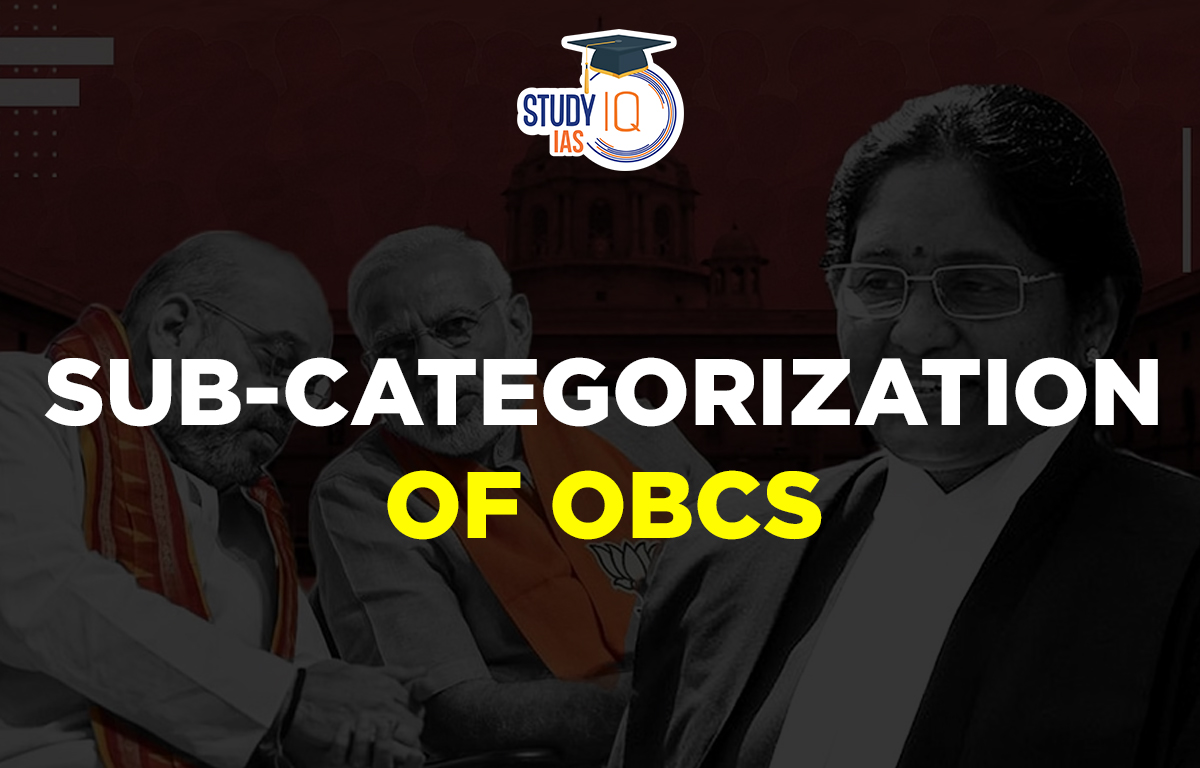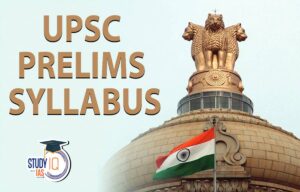Table of Contents
Context: The Union government has informed the Lok Sabha that the Justice G. Rohini Commission, which is looking into the sub-categorization of OBCs, has been working without the data from the previous Socio Economic Caste Census (SECC).
More on Sub-Categorization of OBCs News
- Sub-categorization involves dividing the larger OBC group for the purpose of reservation. Currently, 27% reservation is granted to OBCs in jobs and education under the central government.
- The plan is to divide the existing 27% OBC quota, with the maximum reservation given to caste groups that have been historically crowded out, and minimum reservation for the dominant caste groups.
Justice G Rohini Commission
- The Justice G. Rohini (retd.) commission was set up under under Article 340 of the Constitution in 2017 by the Ministry of Social Justice to sub-categorise the nearly 3,000 caste groups that are currently listed as OBCs on the Central list.
- Objective: To determine which caste groups had the most access to benefits, thus crowding out less privileged caste groups.
- Developing mechanism, criteria, norms and parameters in a scientific way for sub-categorization within OBCs.
- Identifying the different castes or sub-castes in the Central List of OBCs and classifying them into their respective sub-categories
- Study entries in the Central List of OBCs and suggest correction of any repetitions, ambiguities, inconsistencies and other issues.
- Tenure: The commission was tasked with submitting its report within 12 weeks. However, it has been given 14 extensions till date.
- Proposed plan: The commission has proposed to divide OBCs into four subcategories numbered 1, 2, 3 and 4 and split the 27% quota into 2, 6, 9 and 10%, respectively.
- It also recommended completely digitizing OBC records and a standardized system for issuing OBC certificates.
Need for Sub-Categorization
- Cornering of quota: Many groups believe that only a few affluent communities in the Central List of OBCs have secured a major part of the 27% reservation.
- Equitable representation: Creating sub-categorization would ensure “equitable distribution” of representation among all OBC communities.
- Realizing true potential of social justice: The idea of social justice has largely remained unrealized due to cornering of quota by affluent groups. Sub-categorization will ensure that the marginalized OBC groups will get benefits of reservation.
Challenges/ Drawbacks in Sub-Categorization
- Lack of suitable data: Data on socio-economic indicators such as education, land-holding, poverty and also on levels of discrimination is needed to identify such groups. For that, a detailed study has to be conducted.
- Political barriers: The issue of sub-categorization will turn into a political issue, leading to watering down of the initial recommendations.
- Internal conflict: Introducing sub-category within OBCs is expected to create rift between groups that have benefitted and others that have missed out.
Way Forward
- One way to bypass the challenges of sub-categorization is by reducing the size of the population eligible for reservation.
- This looks the most suitable option given the 50% cap on reservations and the limited availability of public sector jobs.
Socio Economic Caste Census (SECC)
Census
- Census will provide the government a portrait of the Indian population.
- Census is covered under Census Act of 1948, allowing data to be kept confidential.
SECC
- SECC is a tool to identify beneficiaries of state support.
- Data gathered through SECC is open for use by Government departments.
- The last SECC was conducted in 2011. Before that, it was conducted in 1931. It will cover every Indian family, both in rural and urban India.
- The family has to provide information on:
- Economic status
- Caste name they belong to
- Significance
- The SECC data will help authorities in understanding indicators of deprivation, permutations and combinations of which could be utilized by authorities to define a poor or deprived person.
- It will help in identifying caste groups that were economically worst off and which were better off.
Additional Information
Kaka Kalekar Commission
- The commission was formed in 1953 to identify backward classes other than the Scheduled Castes (SCs) and Scheduled Tribes (STs) at the national level.
Mandal Commission
- The Mandal commission formed in 1980, estimated the OBC population at 52% and classified 1,257 communities as backward.
- It recommended increasing the existing reservation quotas from 22.5% to 49.5% to include the OBCs, apart from SC/ST.
National Commission for OBCs
- The National Commission for OBCs is a constitutional body set up under 123rd Constitutional Amendment Bill, 2017 and 102nd Amendment Act, 2018.
- Previously, it was a statutory body set up under the National Commission for Backward Classes Act, 1993 after the Indira Sawhney case (Mandal case).



 UPSC Mains Syllabus 2026, Optional Sylla...
UPSC Mains Syllabus 2026, Optional Sylla...
 UPSC Prelims Syllabus 2026 PDF, Check Su...
UPSC Prelims Syllabus 2026 PDF, Check Su...
 UPSC Syllabus in Hindi 2026: डाउ�...
UPSC Syllabus in Hindi 2026: डाउ�...

























